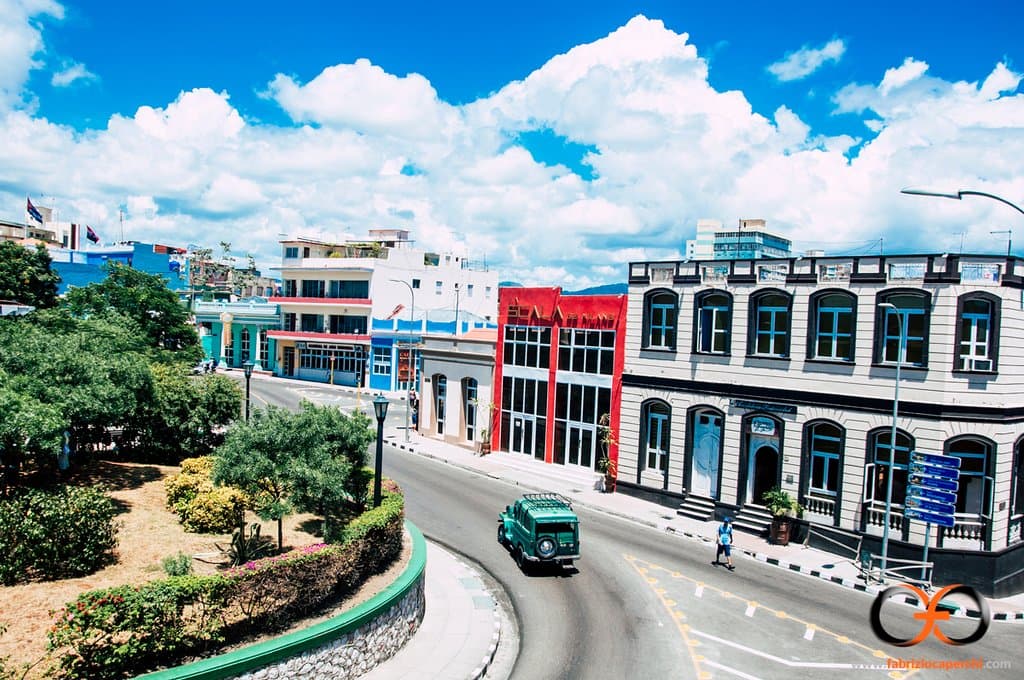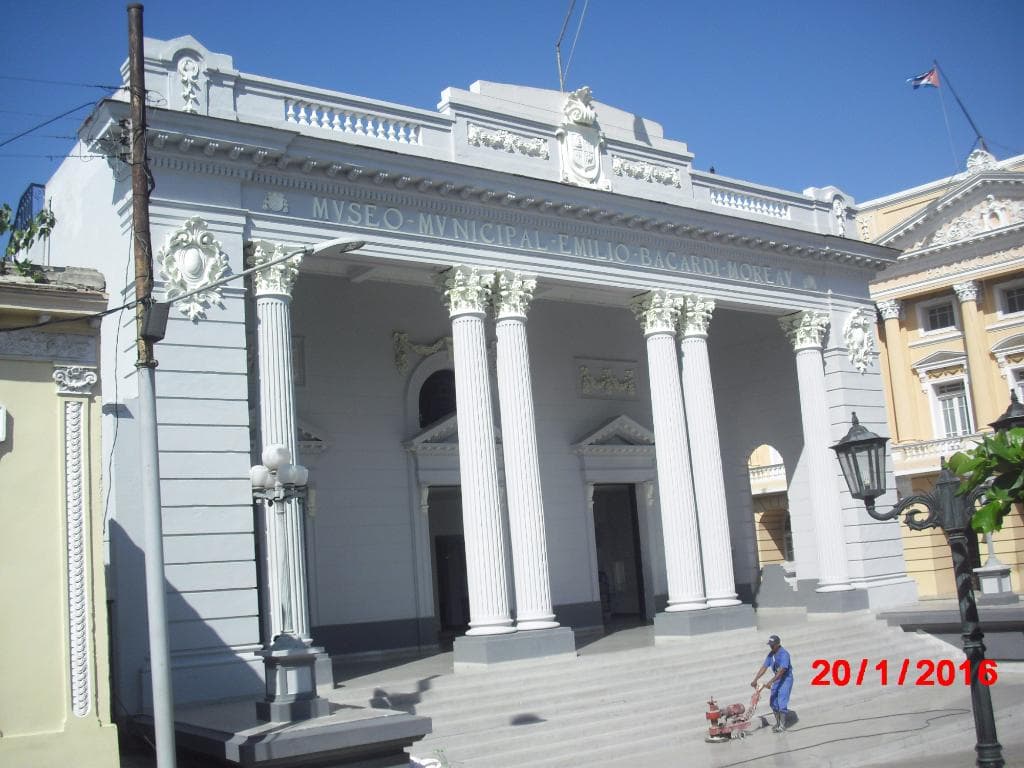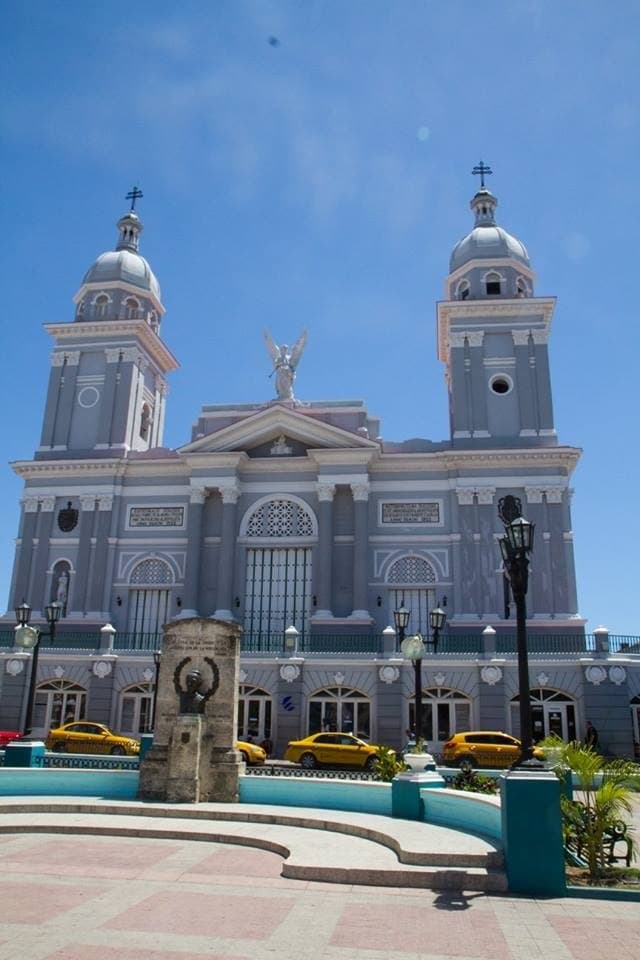
Cuartel Moncada Museo 26 de Julio
Historic barracks turned museum, documenting the pivotal 1953 assault that ignited the Cuban Revolution. See bullet scars and revolutionary artifacts.

Highlights
Must-see attractions

Social
From TikTok & Reddit
Best Time
Fewer crowds, more focused visit

Cuartel Moncada Museo 26 de Julio
Best Time
Fewer crowds, more focused visit

Highlights
Must-see attractions
Historic barracks turned museum, documenting the pivotal 1953 assault that ignited the Cuban Revolution. See bullet scars and revolutionary artifacts.
"Witness the bullet-scarred walls and artifacts that tell the story of the Cuban Revolution's beginning."

Consider a Guide
A knowledgeable guide can offer deep historical insights, making the visit more enriching.
Be Wary of Hustlers
Politely decline unsolicited requests for money from individuals, including security.

Highlights
Discover the most iconic attractions and experiences

Bullet-Scarred Walls
Exterior of the barracks
Witness the visible impacts of the 1953 revolutionary assault, a stark reminder of the historical events.

Revolutionary Artifacts
Museum interior
Explore photos and artifacts detailing the early days of the Cuban Revolution and its key figures.

Granjita Siboney
Near Santiago de Cuba
This nearby site was where Fidel Castro and revolutionaries trained for the Moncada assault.
Plans like a pro.
Thinks like you
Planning Your Visit
Understand the History
Navigating Santiago
Best Times
Insider Tips
from TikTok, Instagram & Reddit
Consider a Guide
A knowledgeable guide can offer deep historical insights, making the visit more enriching.
Be Wary of Hustlers
Politely decline unsolicited requests for money from individuals, including security.
Exterior Views
The building's exterior is historically significant and visible even without entering.
Historical Context
Understand that the museum presents a specific narrative of the revolution.
Tips
from all over the internet
Consider a Guide
A knowledgeable guide can offer deep historical insights, making the visit more enriching.
Be Wary of Hustlers
Politely decline unsolicited requests for money from individuals, including security.
Exterior Views
The building's exterior is historically significant and visible even without entering.
Historical Context
Understand that the museum presents a specific narrative of the revolution.
What Travellers Say
Reviews Summary
Visitors find the Cuartel Moncada a significant historical site, particularly noting the visible bullet damage from the 1953 assault. While many appreciate the historical artifacts and the opportunity to learn about the Cuban Revolution, some caution against potential hustlers and highlight the importance of understanding the presented narrative critically.
"Interesting building with visible impacts of the bullits shot by the revolutionaries when they tried to besiege it. Largely accepted to be the start of the Cuban revolution.
Actually a museum wich was under renovation when I was there."
Oliver K
"A good historical site to visit in Santiago, but be aware of hustlers. Even the security guards at the entree could come up to you explain two sentences and then ask (claim) for money. If you don't like that, just say 'no gracias' and look at the place from outside (it's fairly good visible)."
Jid Ebrahimi
"So wiki uses all its info from the memoirs of fidel. My grandfather was there the night the communists attacked. Fidel never showed up till the fighting was over. My grandfather was a major stationed there. He was captured once the ammo had run out an most pro democracy soldiers were killed or captured.. the communiat soldiers had entered during a festival where all the gates were open. It was a blood bath. Wiki an goin to cuba will only give u the fake communist side of the story."
Yoni M
What People Like
What People Dislike
Frequently Asked Questions
🚇 🗺️ Getting There
The museum is located in Santiago de Cuba. Taxis are a common and convenient way to reach it from most parts of the city. You can also inquire about local buses, though routes may vary.
Parking can be challenging in the historic center of Santiago de Cuba. If arriving by private vehicle, look for designated parking areas or be prepared to walk a short distance.
Most international visitors arrive via Havana and then take a domestic flight or bus to Santiago de Cuba. The journey itself is part of the Cuban experience.
🎫 🎫 Tickets & Entry
Opening hours can vary, and it's advisable to check locally or with your accommodation. Some sources suggest it's open during typical museum hours, but it's best to confirm.
Admission fees are generally modest. However, be prepared for potential requests for 'tips' or 'donations' from individuals, even those who appear to be staff.
Advance booking is typically not required for the Cuartel Moncada museum. You can usually purchase tickets upon arrival.
There is no strict dress code, but it's recommended to dress respectfully, as you would for any historical or cultural site.
Photography policies can change. It's best to check on-site or ask a guide if photography is permitted inside the exhibition areas.
🎫 🧭 Onsite Experience
The Moncada Barracks was the site of a failed armed revolt led by Fidel Castro on July 26, 1953, which is widely considered the start of the Cuban Revolution.
The museum displays photographs, artifacts, and documents related to the 1953 assault and the subsequent revolutionary movement. You'll see evidence of the battle, like bullet holes.
Yes, guided tours are often available and highly recommended. Guides can provide detailed historical context and answer questions, offering a richer understanding.
A visit can take anywhere from 1 to 2 hours, depending on your interest level and whether you opt for a guided tour.
Accessibility information can be limited. It's advisable to inquire directly about the museum's facilities for visitors with mobility challenges.
📸 📸 Photography
The exterior walls with visible bullet holes are a striking photographic subject. The courtyard and any preserved historical elements also offer great photo opportunities.
Drone usage is generally restricted in Cuba, especially around historical and government buildings. It's best to assume it's not permitted.
Locals might point out specific historical markers or areas that hold particular significance. Engaging with guides can also lead to unique photo insights.
For Different Travelers
Tailored advice for your travel style
👨👩👧 Families with Kids
Consider visiting Granjita Siboney as well, as the idea of a secret training ground might appeal to younger imaginations. Keep explanations simple and focus on the bravery of the people involved. Be prepared for potential hustlers and have a plan to politely decline any unwanted interactions.
History Buffs
Be sure to explore the bullet-scarred walls and the artifacts within. For a more complete understanding, research different historical accounts of the event prior to your visit to compare with the museum's presentation.
Budget Travelers
To save money, consider using local buses if you're comfortable with them, or negotiate taxi fares beforehand. While guides enhance the experience, you can still gain a lot from exploring the museum independently if budget is a primary concern.
Deep Dives
In-depth insights and expert knowledge
The 1953 Moncada Barracks Assault
It's important to note that historical accounts of the assault vary. The official narrative presented in Cuba often emphasizes the bravery and strategic brilliance of the revolutionaries. However, some historical analyses and personal testimonies suggest a more complex reality, including Castro's alleged absence during the main fighting and the use of propaganda to shape the historical record.
Visiting the museum allows you to see the physical remnants of this event, such as the bullet-scarred walls, which serve as a tangible connection to Cuba's revolutionary past. Understanding these different perspectives can enrich your appreciation of the site's historical significance.
Navigating Historical Narratives in Cuba
Many travelers find it beneficial to seek out diverse perspectives. Engaging with local guides who offer nuanced explanations, reading historical accounts from various sources before your trip, and being open to different interpretations can provide a more comprehensive understanding. For instance, some accounts suggest that the extent of Fidel Castro's direct involvement in the initial assault might be embellished in official histories.
This approach allows for a deeper appreciation of Cuba's complex history, moving beyond a single, potentially propagandistic, viewpoint. It encourages critical thinking and a more informed engagement with the sites you visit.
The Role of Granjita Siboney
Visiting Granjita Siboney offers a glimpse into the humble beginnings of the revolutionary movement. It provides context for the dedication and resourcefulness of the rebels who trained in such modest conditions before undertaking their ambitious mission. The site is preserved to reflect this historical period.
It's often visited in conjunction with the Cuartel Moncada museum, offering a more complete picture of the events leading up to and including the assault. The contrast between the training grounds and the military barracks underscores the daring nature of the revolutionaries' plan.




Social
from TikTok, Instagram & Reddit